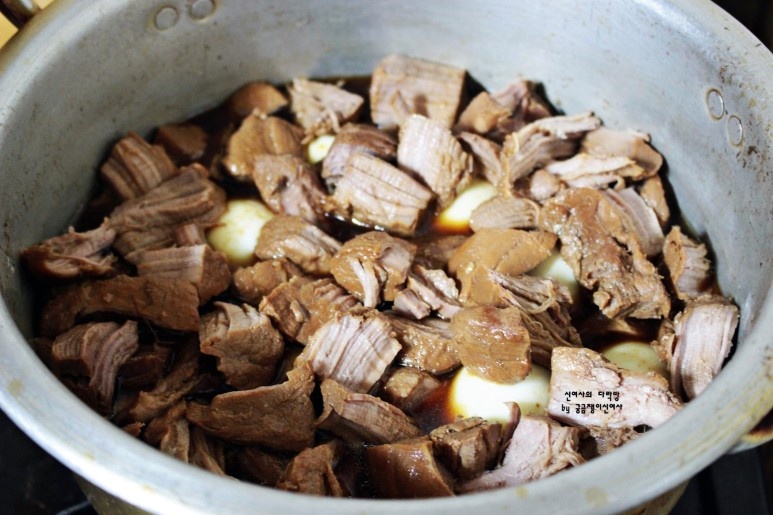Hearty Pork Jangjorim: The Ultimate Braised Pork Side Dish Recipe
How to Make Delicious Pork Jangjorim (Braised Pork) Side Dish

Looking for a satisfying side dish? Today, let’s make Jangjorim with tender pork! This recipe guarantees a flavorful and comforting addition to your meals.
Main Ingredients- 1kg Pork Tenderloin (Pork fillet, recommended to use fresh ‘Han Don’ brand)
- 1 Paprika (optional, for color)
- 1/2 Onion
- 1 Scallion (Green onion)
- 1 handful Whole Garlic cloves (approx. 10-15 cloves)
- 2 Korean Cheongyang peppers (if you like it spicy)
- 1/2 Ginger (sliced thinly)
Cooking Instructions
Step 1
Let’s make ‘Pork Tenderloin Jangjorim’ today! This savory and sweet dish is a perfect match for rice and makes for a satisfying side dish that you can enjoy for days. Using tenderloin from ‘Han Don’ brand pork will result in an especially delicious Jangjorim.

Step 2
First, prepare the vegetables for the Jangjorim. Remove the seeds from the paprika and cut it into appropriate sizes. Roughly chop or slice the onion. Cut the scallion into large pieces, and clean the whole garlic cloves. Slice the Cheongyang peppers and ginger thinly. (Paprika adds color; you can omit it if you prefer.)

Step 3
Soak the pork tenderloin in cold water for about 30 minutes to remove any excess blood. Thoroughly draining the blood is crucial for a clean and savory Jangjorim flavor. It’s even better if you change the water once or twice during soaking.

Step 4
Place the drained pork tenderloin in a pot. Add enough water to cover the meat. Toss in 1 teaspoon of whole peppercorns and a pinch of dried rosemary, then bring to a boil over high heat. (Rosemary helps eliminate any pork odor. It’s fine to skip if you don’t have it.)

Step 5
As the meat cooks, impurities might rise to the surface. Once it starts boiling, reduce the heat to medium and continue to simmer for about 20-30 minutes. Remove the cooked pork, rinse it under cold water to wash away any remaining impurities, and drain well. This parboiling step helps tenderize the meat and remove any gamey taste.

Step 6
Now, let’s make the braising sauce. In a pot, combine 2 cups of soy sauce (Guk-ganjang or Jin-ganjang), 1 cup of water, 2-3 tablespoons of sugar, and 2 tablespoons of mirin (or cooking wine). Mix well. Add the parboiled pork tenderloin, along with the prepared scallions, whole garlic, sliced ginger, onion, and Cheongyang peppers.

Step 7
Bring the mixture to a boil over high heat, then reduce to medium-low and simmer for about 30 minutes to 1 hour, allowing it to reduce. Be careful not to simmer over high heat for too long, as this can make the meat tough. Flip the meat occasionally to ensure it’s evenly coated with the sauce. Once the sauce has thickened to your liking, remove the pork. Let it cool slightly, then shred it into bite-sized pieces. (Be cautious when shredding hot meat; always wait until it has cooled down.)

Step 8
While the Jangjorim is braising, prepare the hard-boiled eggs. Boil 10 eggs. (A sweet anecdote: the son enjoyed one of the eggs immediately!)

Step 9
Return the shredded pork and the boiled eggs to the pot with the braising liquid. Continue to simmer for another 10-15 minutes, allowing the eggs to absorb the delicious sauce. Cook until the sauce reaches a desirable consistency, perfect for enjoying with the pork. While it’s delicious served warm, letting it cool and storing it in the refrigerator will enhance the flavors even further.




